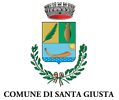A JOURNEY THROUGH ROMANESQUE
Valdera and Volterra itinerary
At the boundary with the dioceses of Pisa, Lucca and Volterra, Valdera is a region scattered with boroughs, manors and medieval pievi, mainly rising upon the hills. In the valleys, subjected to turn into marshland, some ancient, unsafe ways would link the Volterra area to Pisa, Lucca and Florence.
Romanesque buildings in Valdera present a repertoire of plain architectural and sculptural forms, reworked in the mid-19th century following a strong earthquake that had caused serious damage to the structures. Most rich decorative features provide evidence of the close relationships between this territory and the other Tuscan areas.
Past the Valdera region, the territory of Volterra is marked by an evocative craggy geological formation. Volterra lies on a highland and appears as a small chest of Etruscan, Roman, medieval and modern treasures.
Despite its apparent isolation, the town of Volterra has always seized a number of cultural stimuli coming from the different bordering territories, conveying them into an original language clearly expressed by the most significant instances of Romanesque architecture.
The itinerary starts from the pieve of Palaia, set in a charming hilly landscape; it takes to the pieve of Peccioli, inside a medieval borough, then stops at the abbey of Morrona, belonging to a private property, and goes up to Volterra. There, it visits the Camaldolese abbey, looking onto the amazing landscape of crags, then the cathedral and the baptistery, in town; it continues up to Montecatini Val di Cecina, were the church of San Biagio dominates the main square of the mining borough.
Itinerary map
![]() Accommodation3016|3020|3017|3021|3018|3019 [6]
Accommodation3016|3020|3017|3021|3018|3019 [6]
![]() Art and culture3056|3060|3057|3061|3058|3059 [6]
Art and culture3056|3060|3057|3061|3058|3059 [6]
![]() Handicrafts and typical products3097|3101|3098|3102|3099|3100 [6]
Handicrafts and typical products3097|3101|3098|3102|3099|3100 [6]
![]() Cultural centres3139|3143|3140|3144|3141|3142 [6]
Cultural centres3139|3143|3140|3144|3141|3142 [6]
![]() Cinemas and theatres3180|3184|3181|3185|3182|3183 [6]
Cinemas and theatres3180|3184|3181|3185|3182|3183 [6]
![]() Nature and wellness3223|3227|3224|3228|3225|3226 [6]
Nature and wellness3223|3227|3224|3228|3225|3226 [6]
![]() Restaurants3264|3268|3265|3269|3266|3267 [6]
Restaurants3264|3268|3265|3269|3266|3267 [6]
![]() Leisure3302|3306|3303|3304|3305 [5]
Leisure3302|3306|3303|3304|3305 [5]
























